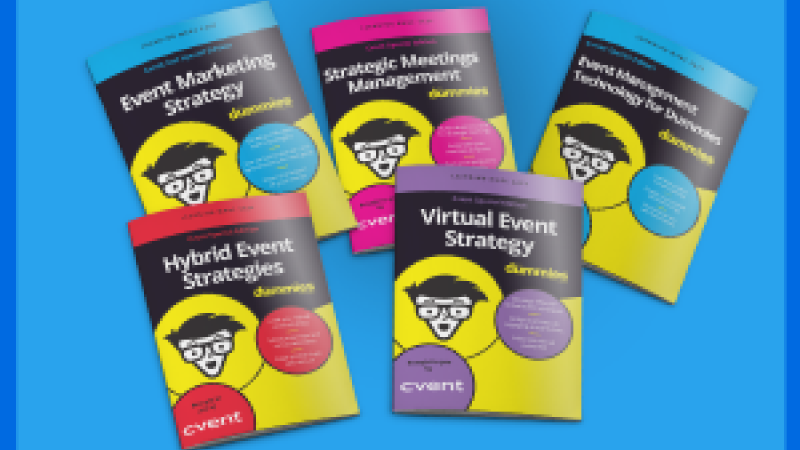If you’re in the meetings and events industry, there’s a good chance you’ll have to send out RFPs at some point. But what even is an RFP and what does the overall process look like?
What is an RFP?
An RFP or Request for Proposal is a process by which companies, the government, and other organizations make a big-ticket purchase. In the meetings and events industry, a perfect RFP is often considered the cornerstone to improve venue sourcing process and maximize ROI. Submitted by an event organizer, an RFP is created to source suppliers and procure services such as food options, AV, meeting space, etc. It is usually sent when planning an event in a different city when there is no preferred vendor, and/or when planners intend to opt for a new venue or vendor. It can also be sent if there is a major change in event requirements from the previous year, such as event size and budget.
Why Submit an RFP?
It is normal for a seasoned event planner to develop relationships with venues and vendors over a period of time. But this relationship shouldn’t turn into an obligation to return to the same venue over and over again. If you continue with the same vendor, you might lose track of the market value and end up paying a lot more! As suppliers continue to change their offerings to woo planners, sending a request for proposal can help you choose your ideal fit. By asking precise questions about services and pricing in an RFP, you can see which supplier is willing to offer you the best deal.
In other words, sending an RFP can give you immense strategic and tactical value. After all, suboptimal results and ineffective processes are too common features of poor event sourcing. In this detailed guide, we’ll uncover the process of writing an effective RFP and walk you through some RFP best practices.
RFP for Hotels, Venues, and Conferences - How to Write an Event Venue RFP
Event planners around the world agree that investing time in building an RFP process can yield major benefits that improve the overall quality of events. Here is our step-by-step process to write an effective RFP for hotels and venues.
1. Provide an overview
When you design an RFP, you should provide all the details for your organization and the particular event you are asking your recipients to bid on. This helps in explaining your needs and why you think that the hotel or venue is aligned with what you are seeking. The key is to avoid generalities and be specific about the event theme, attendee demographics, transportation, and other requirements. The more precise your requirements are, the more viable proposals you will get.
2. State the Purpose
Your RFP should clearly define the purpose of your event in all possible senses. Is this a one-time event or does it happen every year? Include that information. You should also mention if you’d like to make the venue a preferred destination if everything goes well. The goal is to let the venue know that they might get more business in the future, which could lead to more competitive pricing. While you’re at it, don’t forget to mention your event objectives and ask the suppliers how they can help you achieve them.
3. Create an Event Profile
Your event profile will house a checklist of things you want from the venue. It lets you define and determine all the information you want from a supplier and sets expectations.
Submission
While crafting an RFP, you should include the submission details for the venue, such as the proposal deadline, how it should be returned, and by when you intend to make your decision.
Timing
Provide the time and date of the event. It is also good to mention how early you need to access the venue on the day of the event.
Event
This is perhaps the most important part of your RFP. It is the place to include all event details. Some details worth mentioning are:
- The type of event
- Format of the event
- The theme, topic, and vision of the event
- Any historical event details or other background information (sharing pictures of past events can really help!)
- Any preference in terms of ambiance and layout
- Your event page along with social media handles
Audience
Your RFP should clearly state the minimum and the maximum number of attendees you anticipate at the event along with the demographics of your target audience.
Conference Room
Depending upon the number of expected attendees, mention how big the room needs to be, as well as the breakout room and pre-function space. Ask if there is a green room available and the floor plan of the venue. This will help you in setting up the event and keeping your event-related material in one place.
Food and Beverage
In this section, indicate what your catering spend is and the type of refreshments you intend to provide for your guests. If there are any meal preferences or dietary restrictions, don’t forget to mention them.
Technology, AV and Wi-Fi
State your requirements for AV setup and equipment for the room. Also, mention if there is a need for WiFi connectivity and any other type of technology you will need.
4. Disclose the Budget
In your RFP, it is critical to explain budgeting guidelines. Identify and include prices for parking, internet/utility, venue, F&B, labor, etc.
5. Stay Connected
When you write RFPs for venues and hotels, make sure to be available for communication with them. After reading your proposal, suppliers may have questions. Therefore, mention your company name, mailing address, and phone number in the RFP. To make communications easier, disclose your preferred method of communication and provide a backup contact number.
RFP Best Practices
Now that you know the process of writing effective RFPs for venues and hotels, there are certain RFP sourcing best practices you should keep in mind to get the most out of the event sourcing process.
Collaborate with Stakeholders
Before you even begin drafting an RFP, know what stakeholders need to be involved in the purchasing decision. Schedule rounds of internal meetings to understand the business and the overall budget so that you can communicate that in the RFP. In these meetings, you should also establish how you will score the vendors, the evaluation criteria, and potential “dealbreakers.” Document your team’s responses and come to a mutual understanding.
Be Specific
Compile a list of questions that you want to include in the RFP. To help you get started, we have already shared some questions in this guide. It is also wise to include open-ended questions, as well as the criteria for comparing one vendor to another. Since your event has a timeline, don’t forget to set clear timelines for both internal stakeholders and vendors.
Score and Shortlist
Involve internal stakeholders in the evaluation process and score the supplier’s responses. Eliminate vendors that fail to meet the minimum requirements. Compare and score different vendors based on their strengths. Shortlist the ones with the top scores, select the winner, and contract.
Seek More Information
While you follow these RFP sourcing best practices, don’t be shy to ask for demos or meetings before you make the final decision. It is also a good practice to read reviews and contact references to be sure of your choice.
Negotiate for the Best Deal
Once you have scored suppliers, you may want to negotiate with other leading contenders for the best deal possible. Once the negotiations are complete, lock down the venue of your choice and notify the non-winners. Thank them for taking the time to respond to your RFP.
Use RFP tools
The most popular method of managing RFPs is by using long email threads containing spreadsheets and word documents. This is a tedious process that can often lead to a mismatch of data and people. It is an arduous and time-consuming way to source event venues. For an accurate evaluation method, many planners are embracing RFP management software.
Invest in an RFP Management Solution
Investing in an RFP management solution can be a game-changing investment for you and your team. RFP tools can get your internal stakeholders involved in every step of sourcing events and save time by providing all the relevant information in one place for direct comparison. It saves you from referring to tiring documents and can score venues based on the parameters you set. That is half your event sourcing job done!


